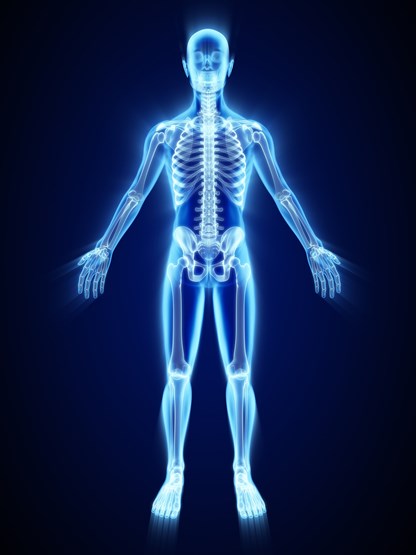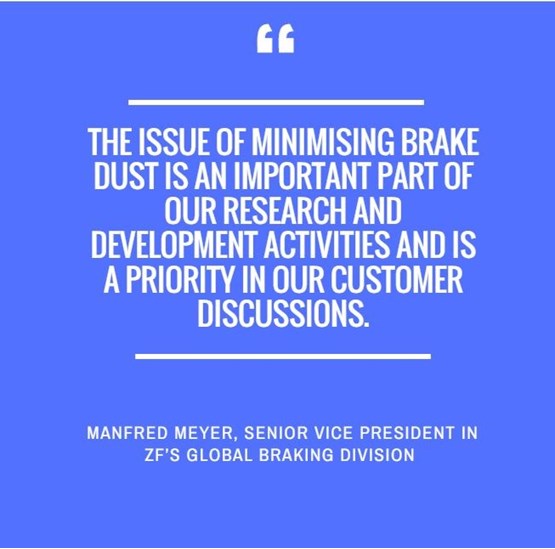Tyre, brake, clutch and road surface wear also play a significant part in the production of microscopic particles that can invade the body’s vital organs. By James Gordon
Memo to all commercial fleet manufacturers: Together with Government and academia, you will have a vital role to play in helping to mould and shape Britain’s air quality plan.
That is the view of one of the UK’s most distinguished academics on air pollution, Professor Prashant Kumar, a chair in Air Quality and Health at the University of Surrey, who believes Government intervention alone, which includes clean air zones and a ban on sales of all new petrol and diesel non-hybridised vehicles by 2040, will help in improving air quality, but will not solve Britain’s air pollution problem all together.
This is partly because while zero emission vehicles travelling in a clean air zone will not emit any harmful NOx, CO2 or hydrocarbons (HC), they will release harmful particulate matter through tyre, brake and clutch wear.

While PM2.5 and PM10 non-exhaust particulates are largely invisible to the naked eye, they will, according to Kumar, “become more important especially when the tailpipe emissions are expected to shrink in future”.
Kumar, founding director of the Global Centre for Clean Air Research (GCARE), explains: “According to a recent Joint Research Centre (JRC) Science and Policy Report, up to half of non-exhaust traffic-related PM10 emissions by mass emanate from tyre, brake, clutch and road surface wear.
"That means that even if all passenger and commercial vehicles were powered by electric, this non-exhaust component of particulate matter would still remain.”
There is mounting evidence, too, that they are bad for health. A recent study by the Royal College of Physicians estimated that these microscopic particles are a contributory factor in 29,000 deaths in the UK each year.
In London, where the London Atmospheric Inventory found freight vehicles were responsible for 12% of PM2.5 emissions, the problem is particularly acute.
So, what is the solution?
READ MORE: Chief medical officer calls for ‘simple system with consistency’ to address NOx concerns
“The issue of particulates won’t go away. Updated norms will be needed to target non-exhaust components in future when new vehicle fleet comes in place,” Kumar says.
“With regulators already clamping down on exhaust-related emissions, I believe a greater level of Government scrutiny will prove a catalyst for a lot more research in this area by OEMs, Tier 1s and premium tyre makers.”
But where to start? The JRC report on non-exhaust traffic-related emissions revealed some ‘known knowns’ which “OEMs can”, thinks Kumar “begin to feed into their research and development activities”.
He explains: “We know from past research that up to half of brake wear particles are generated as PM10 and also the indications of ultrafine particle emissions that are less than 100 nm in diameter, can go deep into the lungs but have not come under scrutiny due to not being part of current ambient air quality regulations.”
This fact has not gone unnoticed by EU legislators, commercial vehicle manufacturers and Tier 1 suppliers – many of whom appear to be ahead of the curve.

Take Ford, Continental and Brembo for instance. They are part of the Lowbrasys project which began in 2015 and will end in the autumn.
Funded by the EU’s Horizon 2020 research programme, they are collaborating with academic institutions to create a braking system that Lowbrasys says “will reduce micro and nanoparticles emissions by at least 50%”.
Is this too lofty an ambition? Iveco and ZF may not be part of Lowbrasys, but both take the issue of brake and clutch wear particulates seriously.
Iveco UK director of alternative fuels Martin Flach, who began his career with Ford before joining Iveco in 1986, says the manufacturer is increasingly selling more automatic transmissions, which eliminate the need for a clutch, and therefore reduce particulates.
“Last year 40% of vehicle sales were automatic transmissions. We expect that trend to continue and sales of the manual clutch, and the wearing parts that constitute the clutch, to be very much in the minority in the future,” he says.
“For the larger vehicles, we install automated transmissions. Although they require a clutch, they are electronically controlled meaning that clutch wear is kept to an absolute minimum, which, again, limits the amount of particles emitted from wearing parts.”

ZF, one of the world’s largest automotive suppliers, is responsible for many of the key innovations in both brake and clutch technology systems.
It introduced the first integrated retarder systems (Intarder) for the commercial vehicle sector, which enable 90% of braking without the driver needing to use the service brake.
Manfred Meyer, senior vice president in ZF’s global braking division, says: “The issue of minimising brake dust is an important part of our research and development activities and is a priority in our customer discussions.
"Take Chinese manufacturer, Foton Motors, for instance. It fits all its trucks with the Intarder hydrodynamic auxiliary brake.
“Not only has the ‘Intarder’ reduced maintenance costs and downtime for our customers, we estimate that the one million Intarders manufactured by ZF have prevented the global spread of more than 60,000 tons of brake dust.”
ZF is working with the brake industry to develop more ecological brake and disc materials for commercial vehicles, and is “devoting a substantial amount of R&D to regenerative braking systems”.
READ MORE: Fleets sign up to Air Car real-time NOx emissions trial
So, to what extent does Meyer, who joined ZF’s Global Braking division 30 years ago, think that this cutting-edge technology might one day provide the answer to reducing brake wear particulate emissions?
“While regenerative braking systems cannot solve the issue all on their own, the systems that are currently under development will be able to restore 100% of the battery’s potential/available electric power,” he says.
“That means that we will be able to decrease friction brake utilisation – hence brake dust – by approximately 50% dependent on the e-motor and battery dimension.”
However, Flach believes it will take a degree of Government intervention and a major technology leap before retarders and regenerative braking systems become commonplace in commercial fleets.
“The technology has already been developed,” he says.
“For example, all our smaller vehicles can be fitted with electromagnetic retarders, while customers have the option of equipping larger trucks with hydraulic retarders which are integrated into the gearbox.
“However, the reality is that these systems are currently installed in only 1% of our vehicles in the UK. Therefore, I think it will need a push from Government and a set of regulatory standards developed to reach a tipping point.”

He adds: “In regard to regenerative braking systems, we carried out a lot of R&D regarding hybrid technology fuel savings.
"Our findings revealed that the technology was not economically viable for most fleets.
"Why? With the average annual cost of fuelling a 7.5-tonne vehicle being around £10,000, the technology – if used correctly – would enable fuel savings of around £2,500 each year. But as the systems were costing the customer around £40,000 to install, that would mean it would take around 15-16 years for the technology to pay for itself.”
When the average lifespan of a CV is seven-to-10 years, that is clearly not cost-effective. However, the rapid improvements in braking technology, combined with economies of scale driven by more stringent legislation, may make it viable.
The challenge of eliminating the particles generated by tyre wear is more complex than from brake wear.
Kumar explains: “The JRC Science and Policy report summarised that the PM10 particles generated from tyre wear are usually dominated by zinc, copper and sulphur while the corresponding PM10 from brake wear comprises heavy metals such as iron, copper, zinc and tin.
“But it is not as simple as that. The report also notes that dust generated from the friction between tyre and the road, which we refer to as tyre wear particles, and those from brake wear could account for up to a half of total non-exhaust traffic-related PM10 particles.”
As one of the UK’s leading voices on urban air quality, Kumar says the university’s Global Centre for Clean Air Research “is keen to set-up new research projects in this important area but is yet to be approached by premium tyre makers seeking to further knowledge on the health and environmental impacts associated with tyre use”.
That is not to say that the tyre industry has not carried out its own research.
The Tire Industry Project (TIP), a collaboration of 11 tyre organisations, has carried out various studies to assess the effect of tyre and road wear particles on human health and the environment.
Contrary to the European Union’s findings and to those of the scientific community, the TIP concluded that “in PM10 and PM2.5, tyre and road wear particles were of low concentration and represented only a minor contributor to PM10 and PM2.5”.
With the European Commission recommending that policy options for the reduction of unintentional release of microplastics from tyres be examined, it is likely that more research will need to be commissioned before any meaningful and effective legislation can be passed across the EU.
But one point that academia and the premium tyre makers seem to agree on is that it is not just tyre or brake wear alone that causes the spread of PM10 and PM2.5 particulates, but also road dust resuspension, which is largely generated when the tyres come into contact with the road.
This is a challenge that requires a holistic solution, involving not just the premium tyre makers, but also commercial vehicle makers, governments and road operators.
Dr Julian Francis believes moving to a dynamic road pricing model could help eliminate some of the fine particulate matter created by road dust.

As the head of public affairs for the Association for Consultancy and Engineering, Francis has published his findings in a report entitled, ‘Funding roads for the future’.
“When it comes to investment in the strategic road network, there has not been enough of it over the past decade,” he says.
“In 2011, for example, the Government only spent 75% of 1975 investment levels on our roads. As a result, many of our local roads have a greater number of potholes than is desirable, which is major cause of tyre and road wear particulates.
“In Britain, for example, there are more than four million potholes and the Government recently pledged £250 million to repairs.
"Moreover, the cost of compensating drivers for pothole-related damage runs into millions of pounds each year.
“This can only ever be a temporary solution, however. If the Government were to introduce dynamic road pricing by 2030, as we are recommending, it would mean that there would be more money to spend on local and national road networks, which would mean better quality road surfaces and fewer tyre and road wear particulates.”
But for Iveco’s Flach, identifying the architects and stakeholders necessary to craft the regulation is only half the battle. The real litmus test, he says, “will be enforcing legislation at customer level”.
He explains: “The EU tyre-labelling scheme, where every tyre must be rated on fuel efficiency, wet grip and external rolling noise, has been in force since 2012.
"But it has made little difference when it comes to our customers buying tyres. Rather than making evidence-based decisions on the data, the real focus is on cost and not on selecting a tyre that will heavily reduce tyre wear particulates.
“When customers pick their tyres, their choices are often influenced by tradition and not so much the tyre characteristics.
"And because there are is no legislation in place, if a fleet manager, who is placing a large order does not specify any particular tyre, we will supply him or her with an agreed split from the six tyre manufacturers we work with.”
He adds: “While legislation would go a long way to concentrating consumer minds on particulates, education is key, too.
"While something as simple as pumping tyres to the recommended levels may seem obvious, it is often overlooked by many fleets and at considerable cost to the environment.
"Incorrect tyre pressure leads to poor rolling resistance and wet grip. This, in turn, causes uneven wear, which is a major source of tyre wear particulates.
“Perhaps Government-led awareness campaigns which include the key stakeholders could eliminate a significant percentage of tyre wear particles solely through education.”
It would certainly be a start. Over to you then, Mrs May….
The damage caused by ultrafine particles
While coarse particles such as NOx are mainly deposited in the upper respiratory tract (nose and throat), ultrafine particles such as PM10 and PM2.5 penetrate deep into the lungs.
This means that they potentially pose hazards related to oxidative stress (the body’s ability to detoxify) and inflammation.
They could also enhance early atherosclerosis (plaque build-up in arteries). Several studies have shown that ultrafine particles may become blood-borne and then translocate to other tissues such as the liver, kidneys and brain.
Exhaust and non-exhaust sources contribute almost equally to total traffic-related PM10 emissions.
Brake, tyre and road wear along with road dust resuspension have been recognised as the most important non-exhaust traffic related sources, with their relative contributions to emissions ranging between 16-55% (brake wear), 5-30% (tyre wear) and 28-59% (road dust resuspension).
Brake wear contribution to traffic-related PM10 emissions is much lower in motorways due to significantly reduced number of braking events.
It is predicted that the relative contribution of non-exhaust sources to traffic-related emissions (PM10 and PM2.5) will increase in the forthcoming years due to stricter control in exhaust emissions.




















Jim - 27/04/2018 20:47
Yea, great technology coming from all manufacturers, better thinking about general wear and tear. Amazing emissions levels could get lower. But hey what about the driver, fast acceleration, hard braking, not to clever on careful driving or planning, all increases emissions, so it's not what you drive it's how you drive it. How about offering advanced driver training before you get a nice car?